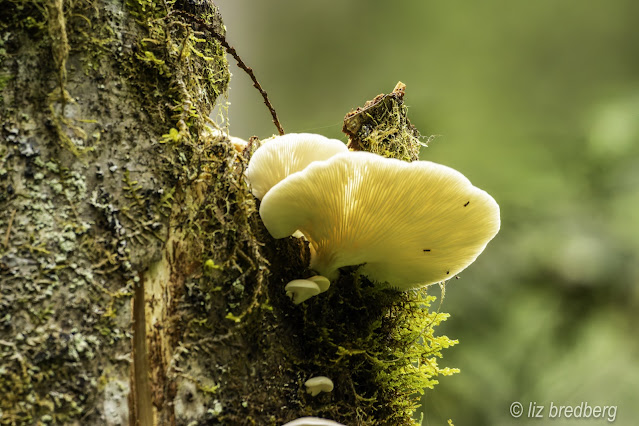3, 9 June
Summer is approaching the Forest and Wetlands.
Vegetation is brilliantly green, birds are vocal, and fruit are starting to set on vines, including the dull oregon grape.
Fewer than in autumn, fungi still remain abundant. The gilled oyster mushrooms call to mind the fan vault ceilings in gothic architecture.
I sometimes wonder whether medieval architects were inspired by the play of light and the verticals of forests.
Tiny mushrooms emerge among the small woody debris.
Exploring a side path from the main route into the marsh, I found one of the few hemlocks to be found in the forest.
On investigation, there are at least three younger hemlocks growing across the path from this mature tree.
Also uncommon for the forest, a mountain ash grows near the path.
Back on the main path to the Marsh, a varied growth of moss and lichen on a Douglas fir demonstrates biodiversity within a small area.
This stump was home to a huckleberry sprout last year. It vanished in the winter's snowfall, but now two of them seem to be re-emerging from the moss.
The shrubs in the fringe are often home for smaller songbirds. This Swainson's thrush was almost visible. It sang beautifully for us...
The flowers of cinquefoil species are all yellow, except for marsh cinquefoil, this one, distinctive, aquatic species.



















Comments
Post a Comment